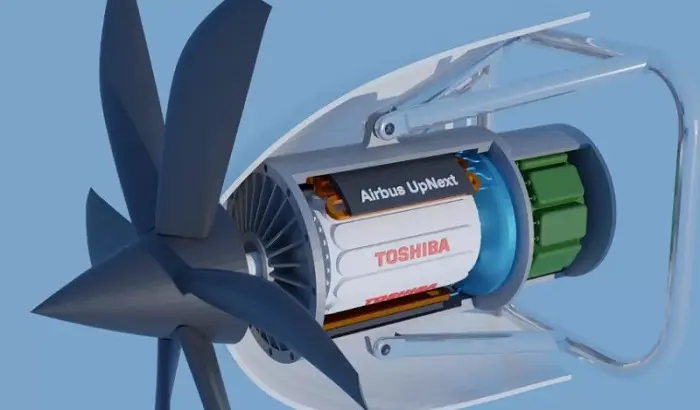As the airline industry grapples with its carbon footprint, reducing emissions from commercial aircraft has become a pressing concern. Jet engines account for approximately 2.5% of global carbon emissions, with private aircraft contributing an additional 1%. While these figures are lower than those from cars and trucks, which make up about 12%, they are still significant enough to warrant innovative solutions. Airbus and Toshiba are exploring a promising approach to tackle this challenge.
Sustainable aviation fuel (SAF) has emerged as a key topic in the quest for greener air travel. However, some SAF technologies raise concerns regarding their overall sustainability. For instance, converting corn into jet fuel involves substantial oil consumption, with estimates suggesting it takes about 1.2 barrels of oil to cultivate an acre of corn, considering the inputs like fertilizers, pesticides, and diesel for farming equipment. This raises questions about the net benefits of such processes, especially when hydrogen could play a role in the equation.
Airbus and Toshiba’s innovative plan diverges from conventional jet propulsion. Instead of relying solely on thrust from jet engines, they propose using hydrogen to cool a superconducting electric motor that drives a propeller. Hydrogen must be cooled to -253°C to become a liquid, and at these frigid temperatures, certain materials exhibit superconductivity, allowing electricity to flow with minimal resistance.
superconducting prototype, which would leverage liquid hydrogen not just as fuel, but also as an efficient cooling medium for the aircraft’s electric drive systems. This cryogenic technology could significantly enhance energy efficiency and performance by minimizing power transmission losses.
While hydrogen holds great promise, there are inherent challenges associated with its use, particularly in terms of energy consumption. As noted by industry experts, the process of producing hydrogen—whether through electrolysis or other methods—requires substantial electricity. Each step, from hydrogen extraction to compression, transportation, and eventual use in fuel cells, entails energy losses. Thus, utilizing hydrogen efficiently remains a crucial factor for its viability in aviation.
Airbus and Toshiba’s collaboration represents a significant step toward integrating hydrogen as a key component of sustainable aviation. By utilizing superconducting technology and cryogenic processes, this approach aims to improve the overall efficiency of electric propulsion systems in aircraft.
As the industry continues to seek solutions for reducing its environmental impact, innovations like the superconducting motor could pave the way for a new era of cleaner, more efficient air travel. The success of this project may inspire further advancements in hydrogen technology and its applications across various sectors, including transportation and energy.
Related topics:

